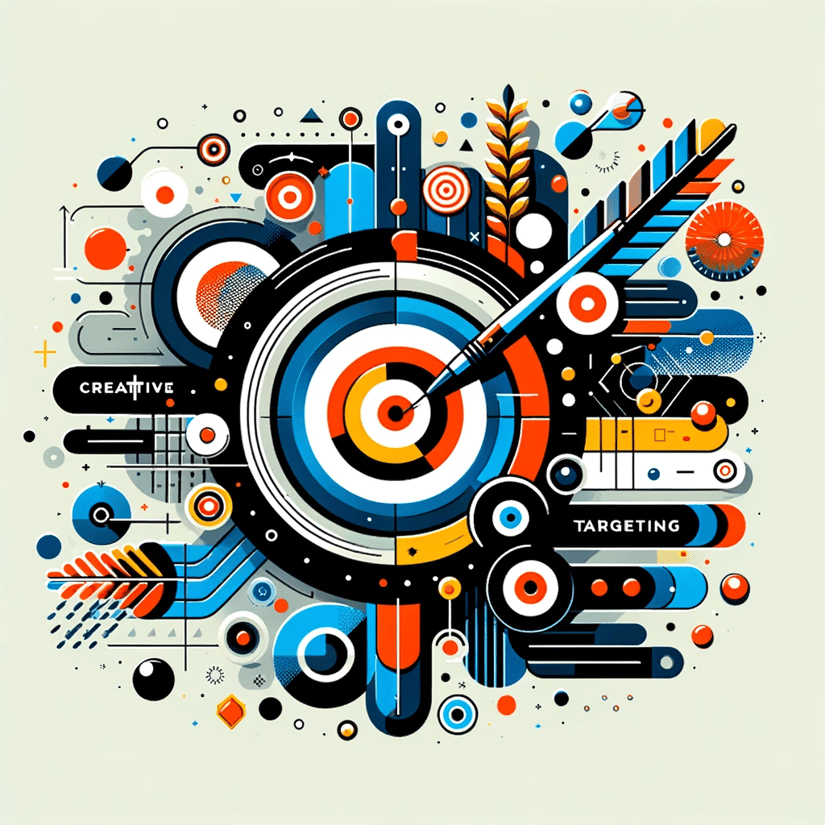Creative Is the New Targeting
In 2024, advertising conglomerates are selling off their creative shops. They might be surprised to learn what their digital rivals are investing in.

Where is marketing headed in 2024? There was a clue earlier this month in the sale of two legendary advertising agencies—Boston’s Hill Holiday and Deutsch New York—from New York’s Interpublic Group (IPG) to New Zealand’s Attivo. The biggest ad agencies have traditionally specialized in generating big creative ideas: The arresting image, phrase or video which—blasted out at scale—can transform a business or product from ignored to craved.
But as Variety noted in its article on the sale, there’s been a vibe shift: The world’s biggest conglomerates are streamlining their old-line ad agencies and pairing the survivors “with companies that specialize in digital advertising or direct marketing, a signal of the need to bolster traditional creative work with an expertise in how to reach specific audience niches.”
By this narrative, performance marketing agencies are ascendent, while creative agencies are struggling to play catch-up. Data, results, and relentless optimization hold the pole position.
But that’s not the full story of where marketing is going in 2024. In fact, those old-line creative agencies might be surprised to hear the new slogan of performance marketers. It’s a message that digital marketers first heard from Meta beginning last spring: “Creative is the new targeting.”
Why the old way isn't working
Performance marketers have a range of levers to pull in order to make Meta’s auction-based ads more efficient: They can adjust factors ranging from bid price to audience targeting, with creative concerns often being near the bottom of the list.
Digital performance experts tend to begin with a limited range of creative options, then aggressively test and learn with the intent of refining and narrowing those choices until they find the one or few ads that perform most efficiently. From there, they invest heavily in the winners. It’s a process of relentless optimization, funneling the biggest spend to a few well-honed messages.
Meta’s message, in short: You’re doing it wrong.
Armed with statistics drawn from across its platforms, Meta’s data science team revealed that the “single most important factor in delivery optimization” is an ad’s creative qualities. More than half—56%—of all action outcomes, according to Meta, are attributable solely to creative factors. The numbers show that factors like bid price and audience targeting—the bread and butter of performance marketing—simply aren’t as important as getting the creative right.
Higher-quality creative isn’t just driving top-line results—it is also, Meta told marketers, “critical to determining both the audience you’ll reach as well as the price you’ll end up paying.”
GET SMARTER: How much do TikTok ads really cost in 2024?
In another wake-up call for performance marketers, Meta shared data showing that “ad fatigue” is much more powerful and prevalent than previously thought. That’s a counterintuitive message: In television, for instance, it’s an article of faith that repeated views are required to break through into a viewer’s awareness. But Meta’s data scientists report that they’re seeing a measurable decline in ad effectiveness the very first time an ad is repeated. By the fourth repeated exposure, Meta projects a 40% drop in click-through rate, and an even steeper drop—60%—in conversion rate. And that performance degrades over time.
The new era of performance
“Creative is the new targeting” demands a new creative approach for performance marketing: And that means a lot more than just A/B testing two slightly different cuts of a single video.
It acknowledges that the winning creative option will vary widely based on factors like audience and intent. It predicts that even the best-performing ads will need regular creative refreshing to offset fatigue. And it presumes that any successful campaign will require marketers to deliver stories and messaging in a wide variety of styles and formats, from highly-produced static ads to what Meta refers to as “lo-fi” content: User-generated and influencer content that matches a platform’s native voice. Without a portfolio of differentiated creative assets, brands will see their costs rise — and simply won’t be able to reach the entirety of their addressable audiences anymore.
Ironically, social media’s AI revolution is driving the ad industry back towards an approach that emphasizes creative excellence. And big creative shops that are falling over themselves to develop digital chops may be shocked to find that digital shops are now investing big in building out their creative capabilities—not because they suddenly want to compete for brand marketing (although they may) but because the rise of AI means that highly-targeted campaign optimization will be incomplete without a robust and diverse set of creative components.
In 2024, we can’t emphasize this enough: If performance marketers don’t figure out how to bring the creative heat, they will be left behind.
What are you doing to transform your creative? Join the conversation.
The Arbiter is a series of informed opinions, strategic outlooks, analytics-backed predictions, and tactical briefings from Gupta Media. Subscribe via email, Substack, or LinkedIn.
